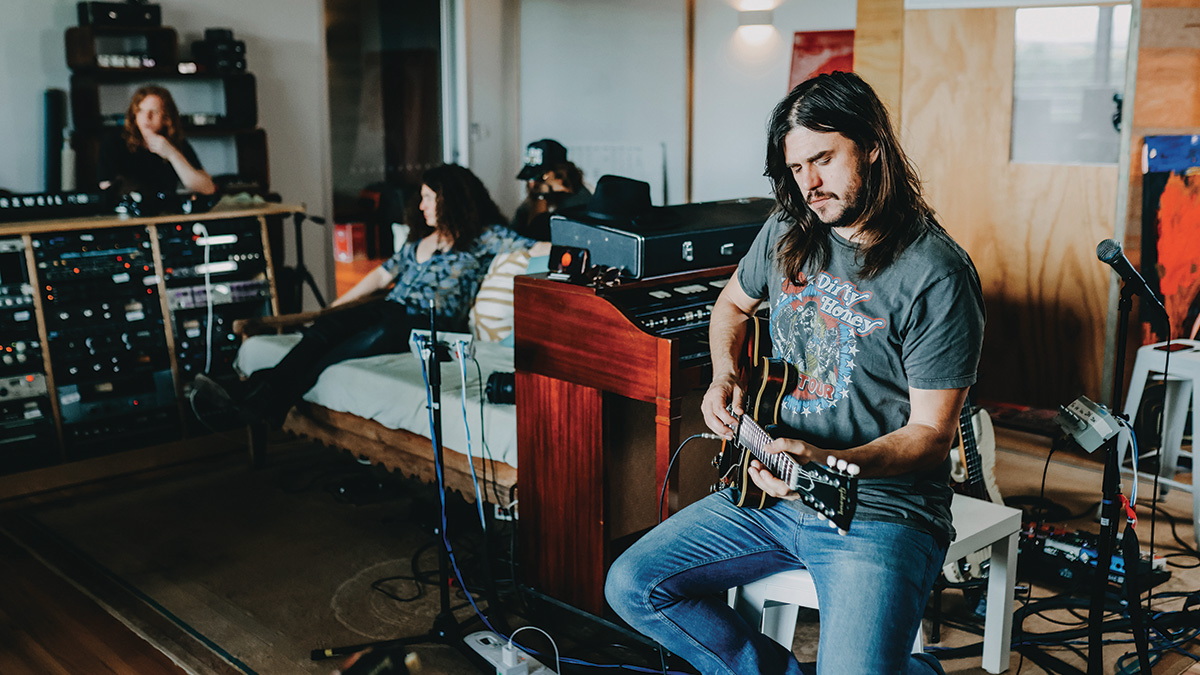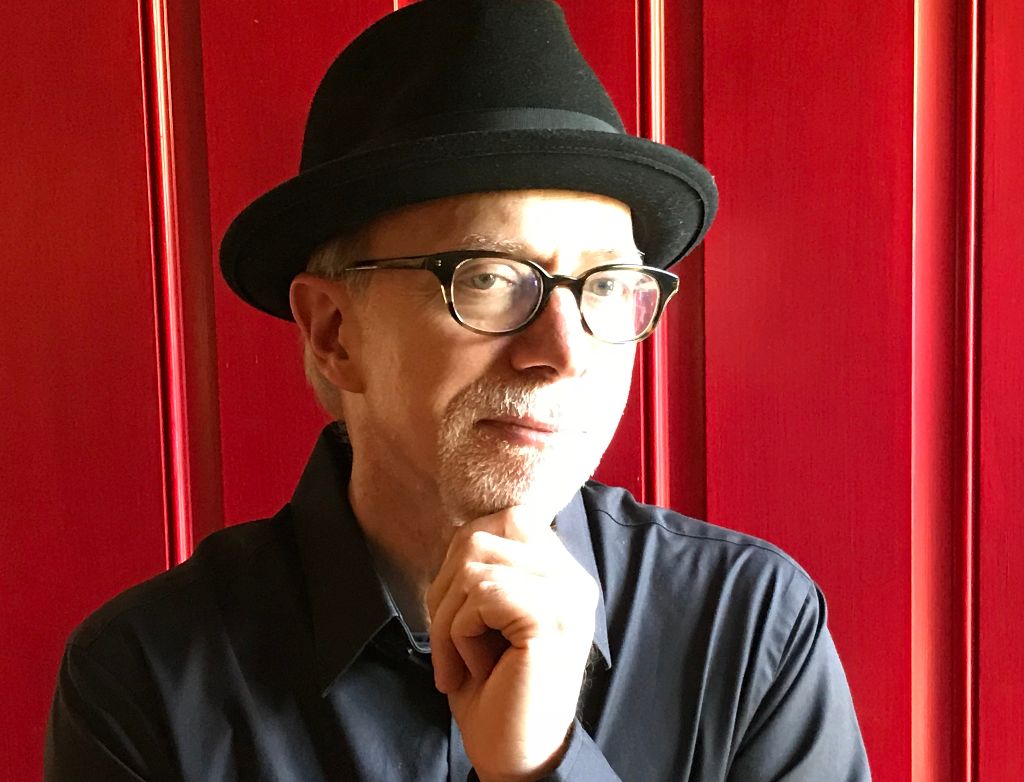“I always get compliments on my tone. It’s become a running joke: ‘Aren’t they gonna say I’m awesome? Is it all about my tone?!’”: Dirty Honey’s John Notto is back in the studio – and he’s still in search of “that great, elusive riff”

When Dirty Honey’s John Notto spoke with Guitar World back in 2021, ahead of the release of his band’s self-titled debut album, the guitarist exuded supreme confidence. “There was no doubt I was going to succeed as a guitarist, and I knew this band would go over,” he told us. “I know that sounds bold, but for me, failure just wasn’t an option.”
Reminded of his words today, Notto lets out a laugh. “Wow, it’s so funny to think I said that,” he says. “I’m normally not so arrogant. I think I was trying to sum up the band’s mentality at the time. We were dealing with a lot of skepticism, so we took a mantra of, ‘we’re going to get there however we can.’ We had to rally each other. But it’s nice to put your dreams out there and be held accountable for them.”
During the past two years, the L.A.-based quartet (which also includes singer Marc LaBelle and bassist Justin Smolian, along with new recruit Jaydon Bean on drums) has found a sizeable audience for their action-packed, good-time brand of hard rock that draws heavily from ’70s groups such as Led Zeppelin, Aerosmith and AC/DC. Notto, in particular, has garnered significant praise for his modern approach to classic guitar sounds.
“I always get compliments on my tone,” he says. “It’s become a running joke: ‘Aren’t they gonna say I’m awesome? Is it all about my tone?’ I also get comments on my lyricism – people say my solos are memorable. I don’t pretend to be a technical wizard doing a masterclass tour, so if people like what I do, I’m pretty happy about it.”
He singles out a particular bit of praise he received from a fan recently: “One guy told me, ‘You’re the most rock ’n’ roll guitarist I’ve seen.’ Hey, I’ll take it. I learned by listening to gritty, sloppy, wild guitarists of the ’70s, so I’m cool with being thought of in that way.”
The band has been a touring machine of late, playing sold-out theater shows in the States and Europe, co-headlining a tour with Mammoth WVH, as well as opening for big-league acts like Guns N’ Roses, Kiss and the Black Crowes.
Ahead of more touring, which includes a slot on Guns N’ Roses’ summer stadium tour of the U.S., Dirty Honey are finishing their second album with producer Nick DiDia (who helmed their first full-length and their debut EP).
Get The Pick Newsletter
All the latest guitar news, interviews, lessons, reviews, deals and more, direct to your inbox!
“Nobody expected anything from our first album, so the situation is different now,” Notto says. “That said, there’s no external pressure on us – we put it all on ourselves. We want this record to be a more complete statement, and we’re pushing ourselves harder than before. There’s no crazy left turns; we still want to sound like ourselves, but only more so. I’m still trying to write that great, elusive riff.”
Dirty Honey’s success comes after Greta Van Fleet opened the doors for new rock bands. Have you followed them at all?
“Yeah, we pay attention to them. They’re a great band. I appreciate how they’re doing their own thing and pushing forward in the face of such harsh criticism. I saw them at the Greek here in L.A., and I was impressed at how they’ve created their own little world. Our music is different from theirs. It’s more carefree – I have that in me. We came up in bars. Not to overuse the word, but our thing is dirtier. It’s lighthearted, sexy, after-hours music.”
Another rock band that’s broken through recently is Måneskin. Have you checked them out?
“I have a little bit. I think our bass player has listened to their new record. I’ve seen their pictures; they’ve got fishnets and that whole vibe. I heard that track they did with Tom Morello, and that was great. They’re killing it.”
What’s it been like opening for Guns N’ Roses?
“We did one show with them here that was like a Caesar’s Palace thing, but we did six or seven stadiums with them in Europe. The first night was in Poland, and it was my first stadium experience. They’re not lying when they say that if you walk away from your monitor, the band feels like they’re in another ZIP code.
“But the magic of the night was getting to watch Guns N’ Roses from the side of the stage. I was so close that I had Axl’s in-ear monitor mix in my head. Looking out at that audience was incredible.”
Before those shows, you toured with Slash. Have you ever jammed with him?
“No, I haven’t. When we opened for Slash, it was so early in our career. We didn’t get a lot of face time with him. He did some photos with us, and he ran into some of the band and said, 'You guys are great.' By and large, he’s a bit of a mystical creature. [Laughs]”
Now that you’re playing bigger places, have you changed your performance style?
“I try to be authentic. Any time I think, 'I have to do this now,' I try not to do it. The music opens me up, and whatever comes out comes out. It’s a process: I’m self-conscious for the first song, and then that fades away. By the third or fourth song, I’m in full expression mode.”
Any changes to your gear to accommodate larger venues?
“When we toured with Mammoth last year, I brought out a second Silver Jubilee half-stack that I used as an overdrive pedal. I would hit the A/B switch and use the amp as my boost. It was pretty blistering.”
Because of the pandemic, you recorded your first album remotely with Nick DiDia. It must feel good to work in person with him again.
“Oh, definitely. We did the EP with him in Australia, where he lives, so we went back there with him this time. It was a bit different because he’s got a new studio, a much bigger place. Our whole thing with Nick was, ‘We know who we are and what we sound like – what’s next? How can we widen this thing?’ We just wanted everything to be better. We wanted to add more instrumentation without it sounding artificial.”
Can you talk about any of the new songs?
“I don’t want to give too much away, but we’ve got some bangers and some down-tempo stuff. There’s more Southern rock. We’ve got some acoustic guitars, but we’re not an acoustic band. There’s more colors, but we’ve got the rock sound as the core.”
As a guitarist, are you drawing inspiration from any new sources?
“I’ve been listening to more Eric Gales. I just met Joe Bonamassa, and he’s great. But Eric is something else. He’s got such soulfulness and he’s so exciting.”
What about the guitars on the album? Are the majority of them Gibson Les Pauls?
“Yeah. I got an amazing gift recently; Gibson sent me a 2021 heavy relic’d Lemon Drop ’59 from the Custom Shop. That thing is spectacular. I swore by my ’58 from 2003, but live I defer to the Lemon Drop. It’s got more high-end bite. It’s already worn out, so I don’t have to worry about bumping it. I used both of those guitars along with a ’59 double-cutaway Junior from the Custom Shop.
“I also had an actual ’64 ES-330, a ’66 335, and there was an old Strat – I can’t remember the year. For one solo, I used a Greco Les Paul. We used some 12-strings and some acoustics. I played a Dobro with a slide on one song. I don’t think I used the same guitar for solos that I did on the main parts; that’s always been a thing with me. There’s a lot of cool guitar sounds. I think people will dig it.”
- Can't Find the Brakes is out Nov 6 via Dirt Records.
Joe is a freelance journalist who has, over the past few decades, interviewed hundreds of guitarists for Guitar World, Guitar Player, MusicRadar and Classic Rock. He is also a former editor of Guitar World, contributing writer for Guitar Aficionado and VP of A&R for Island Records. He’s an enthusiastic guitarist, but he’s nowhere near the likes of the people he interviews. Surprisingly, his skills are more suited to the drums. If you need a drummer for your Beatles tribute band, look him up.
“I heard the Money solo and thought, ‘This is amazing!’ So I sent David a telegram saying, ‘Remember me? I'm in a band now called Roxy Music’”: Phil Manzanera on his friendship with David Gilmour, and the key to the Pink Floyd man's unmistakable tone
“It’s really quite genius, but also hard to learn – it sounds insane, but sometimes the easiest songs still get me nervous”: Kiki Wong reveals the Smashing Pumpkins song she had the most trouble with

![Dirty Honey - California Dreamin' [Official Video] - YouTube](https://img.youtube.com/vi/UiD_Dycn7Ck/maxresdefault.jpg)
![Dirty Honey - When I'm Gone [Official Video] - YouTube](https://img.youtube.com/vi/I8ygfX0BavM/maxresdefault.jpg)

![Dirty Honey - Another Last Time [Official Video] - YouTube](https://img.youtube.com/vi/5tf70bSE0q4/maxresdefault.jpg)











